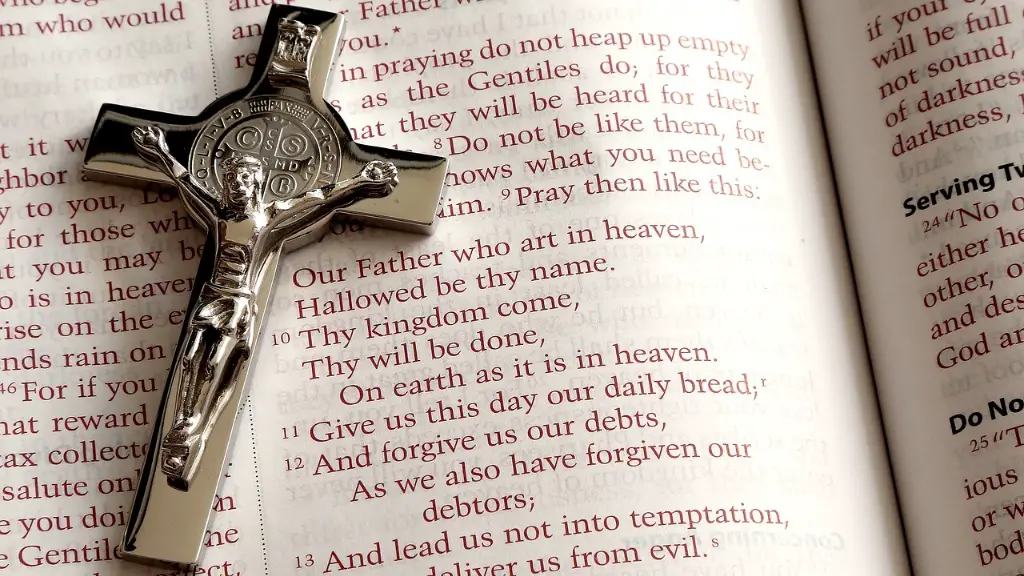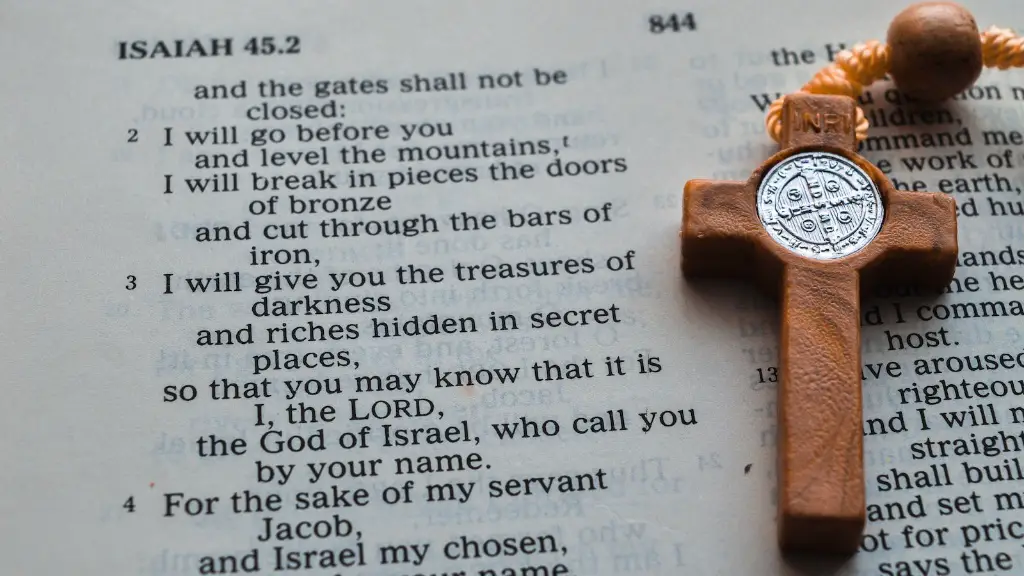The mention of Lilith is not prominent in the Bible, yet she still makes several appearances in various sections of the ancient scripture. An ancient female demon, the figure of Lilith has both curious and controversial origins. Some interpret her to be a ‘first wife’ of Adam before Eve and see her as a figure of dangerous independent womanhood, whereas others consider her to be a succubus who seduces men when they sleep. One way or another, Lilith appears a few times throughout the Bible – primarily in the book of Isaiah and then again in the Book of the Dead.
The Book of Isaiah is where the most information about Lilith can be found in the Bible. It’s been suggested that Isaiah 34:14 could be a reference to Lilith as a demon, but the text is inconclusive. It reads, “And wild animals shall meet with hyenas, the satyr shall cry to his fellow; yea, there shall the night hag alight, and find for herself a resting place”.
The term “night hag” here had been linked to Lilith, but that may not be the case as the term can be applied to any female nighttime disturbance.
The Book of the Dead further refers to Lilith when speaking of the four angels sent by God to guard the Garden of Eden. It is said that two of these were of the like of Adam, two were not. Lilith supposedly being one of the two unlike Adam.
The story of Lilith features across many other civilizations. She is found in ancient Mesopotamia, old Babylonian and Sumerian texts, and is even written of in Cabala and Talmudic lore. But theological scholarship on Lilith is inconclusive.
Scholars have also identified her with extra-biblical tales of female monsters, though much of this is contested. It is also suggested that she was solely invented to account for the fact that the Hebrew Bible does not begin with the creation of Eve from Adam’s rib.
Of course, the Bible itself doesn’t tell us the full story of Lilith, so the remainder of what we know about her is based on interpretation. One popular interpretation of the Lilith story is that she, like Adam – was created from dust, but that she chose to break away after refusing to lay beneath him during intercourse.
There are additional details in the pseudoepigraphal books like the Alphabet of Ben Sira which suggest that she’s a seductress of men, a scheming sinner, a revoltingly beautiful night spirit, queen of the succubi and Adam’s demonic counterpart.
Lilith in Modern Interpretation
For religious feminists, Lilith is often seen as a symbol of independence and themes such as abortion rights and sexual liberation. Modern writers liken Lilith to being a more empowered and safer version of the ‘bad girl’.
Depictions of Lilith often show her as a woman holding a snake – a symbol of her power and her fearlessness. As Lilith refused to accept subordination by Adam, so too did she refuse to accept the oppression of a patriarchal world – she symbolizes power and independence within the feminine experience.
However, the idea of Lilith as a symbol of feminism should be approached cautiously, as many interpretations of her focus on her role as a dangerous seductress to men.
In some works she is represented as a garden-variety wicked woman to caution women against moral failure, while in others she is written of as a breaker of taboos and an example to feminists of how to defy conventions.
Lilith in Different Religions
Aside from Christianity and the Bible, there is much mention of Lilith in other religions. In the Middle East, especially among some sects of Judaism, Lilith is known as a female demon or spirit who, much like her biblical root, is seen as a seductress of men in the night. She is said to either murder or suck the blood of male sleeping victims.
In Islam and some Jewish folklore, she is believed to have spawned from Adam’s rib, like Eve – establishing a duality throughout religion as she is the dark to Eve’s light.
In other religious texts, she is seen in a different light. In Kabbalah for example, she is not a seducer to be feared, but rather an Adam-like figure who is equal to him and has the capability to bring chaos to the world when she is not accepted as such. This notion of Lilith speaks of the need for harmony between masculine and feminine energies, out of which, unity is achieved.
In some traditions Lilith is powerful goddess, while in others she is perceived to be a demon. To some she represents dark independence and a break from patriarchy, while others look upon her as an embodiment of temptation, chaos and sin.
Lilith in Popular Culture
Though her legacy in the Bible is brief, many authors, musicians and artists have integrated Lilith into their works. For example, early feminist thinker Mary Shelley drew parallels between Lilith and her book’s antagonist monster in the famous Frankenstein. In this context, Lilith stands as a symbol of power, independence and equality. In John Milton’s Paradise Lost, Lilith is the snake in the Garden of Eden.
The figure of Lilith is surrounded by varied interpretations, so it’s clear why she is a popular figure in today’s popular culture. Each sector reaches out to and glorifies different aspects of her being, presenting her in ways that resonate with their individual audiences.
Musically, Lilith is found in the works of many popular artists. Samples of her have been used in lyrics, album covers and titles, as she stands as a beacon of defiance, power and strength to her audiences.
As a cultural figure, Lilith stands for defiance against oppression, insight into the female experience and power of independent womanhood. In some ways she stands for everything feminism was born to challenge, yet in others she is a representation of what it has come to mean.
Lilith as a Symbol of Feminism
In the cultural imagination, Lilith has long been synonymous with feminism, sexuality, and empowerment. By making a break with Adam, she imbues hope that it may be possible to escape the bonds of patriarchal dominance and create an alternate kind of self-determination and meaning.
She also symbolizes not only female independence but male independency as well. Through her, we can come to terms with human potential, as she rejects submission and stand up against power. Though she is spoken of in biblical and other religious contexts as a figure to be feared, she is instead a beacon of strength, challenging what cannot be mutated and bringing hope of a more just future.
In modern times, Lilith has been a powerful symbol for feminism. She has become a powerful initiator of choice, independent thought and the recognition of unbridled female sexuality. Her namemay be rarely mentioned in the Bible, but her legacy for equality and freedom stands strong in today’s modern world.
Lilith as a Fearsome Spirit
Though she has gained acclaim as a symbol of resistance and power, Lilith has also been a figure of dread and temptation. Her representation suggests a dangerous female spirit coming to take control in the night, something that threatens the foundations of culture, family and faith by confronting the male ego.
She’s used to represent something to be feared, muted and controlled, one that must not be allowed to fully express itself. Her story has been framed as a cautionary tale warning against the dangers of temptation, free will and unchecked power.
In this manner, Lilith serves as a contrasting figure to the ideal of a subdued and obedient Eve, thus bringing emphasis to the fact that a woman’s power, wisdom and beauty are often seen as a threat to male domination.
Lilith is, in this context, an embodiment of womanhood unbound. She is a reminder of the fear women evoke when the full scope of their abilities is unleashed and embraced.
Lilith in Mythology and Folklore
Though her origins differ, Lilith is included in numerous mythologies and folklores. From Mesopotamian texts to Cabalisticlore and Talmudic write-ups, there are many written records depicting the figure of Lilith – each with its own set of interpretations.
In some mythological versions, Lilith was created along with Adam and was given the same blessings and punishments as him. However, she refused submission to him and left the Garden of Eden to partake in her own journey. In others, she is established as an already present female spirit who seduced Adam and abducted his sons – eventually becoming his eternal enemy.
Across mythological layers, Lilith is viewed differently, being a destructive demon at one point, then a willful seductress in another. No matter the context, the commonality of each layer is the idea of female sovereignty, from which we can draw knowledge and understanding of the feminine experience.





